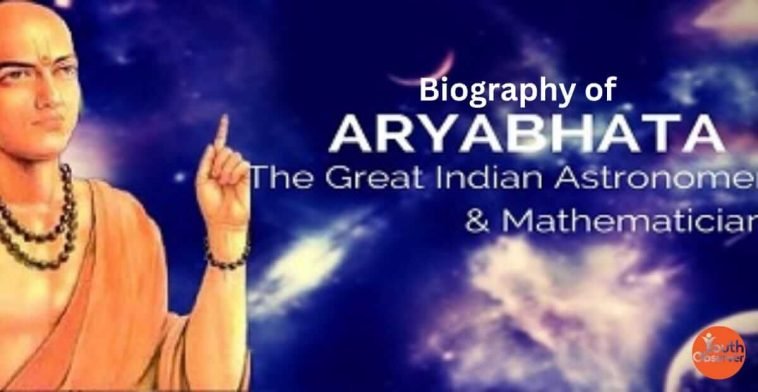In the realm of ancient Indian mathematics and astronomy, the name Aryabhatta shines as a beacon of intellect and innovation. Who is Aryabhatta, and what is the legacy that this remarkable scholar left behind? Let’s delve into the life, works, inventions, and discoveries of Aryabhatta in this comprehensive biography.
Who is Aryabhatta?
Aryabhatta, also known as Aryabhata I, was an ancient Indian mathematician and astronomer who flourished during the 5th-6th century CE. Born in 476 CE in Pataliputra (modern-day Patna, Bihar), Aryabhatta’s pioneering contributions have left an indelible mark on the fields of mathematics and astronomy.
Little is known about Aryabhatta’s personal life, but his monumental works have ensured his place among the greatest minds in history. His scholarly pursuits took him to the renowned Nalanda University, where he honed his mathematical and astronomical skills.
Aryabhata’s Works and Legacy
Aryabhatta’s magnum opus, the “Aryabhatiya,” is a Sanskrit astronomical treatise that outlines his groundbreaking theories and calculations. This work comprises 121 verses, covering various aspects of mathematics, trigonometry, and astronomy. The Aryabhatiya is divided into four sections – “Gitikapada,” “Ganitapada,” “Kalakriyapada,” and “Gola.”
In the “Gitikapada,” Aryabhatta presents a rhythmic introduction to astronomical concepts. The “Ganitapada” delves into mathematics, including arithmetic and algebra. The “Kalakriyapada” discusses the computation of time, while the “Gola” focuses on astronomy and the movement of celestial bodies.
Aryabhatta’s legacy lies not only in his theoretical contributions but also in his practical applications of mathematics to solve real-world problems. His works influenced later mathematicians and astronomers, shaping the course of Indian mathematics for centuries.
Aryabhatta Inventions And Discoveries
One of Aryabhatta’s notable contributions is the introduction of the decimal system. He assigned numerical values to the powers of 10, laying the foundation for the numerical system we use today. Aryabhatta’s revolutionary concept of zero, or “shunya,” revolutionized mathematical notation and became a cornerstone in mathematical thought.
In the realm of astronomy, Aryabhatta proposed a heliocentric model of the solar system, suggesting that the Earth and other planets orbit the sun. This idea was centuries ahead of its time and showcased Aryabhatta’s deep understanding of celestial mechanics.
Aryabhatta’s accurate calculations of the length of a year, the diameter of the Earth, and the distance between the Earth and the Moon demonstrated his keen observational skills and mathematical prowess. His methods for determining eclipses and the positions of celestial bodies reflected an advanced understanding of astronomy.
The Motion of the Solar System
Aryabhatta’s heliocentric model challenged prevailing geocentric beliefs and provided a groundbreaking perspective on the solar system’s dynamics. His insights into the elliptical orbits of celestial bodies foreshadowed later discoveries by astronomers like Johannes Kepler.
Aryabhatta’s accurate calculation of the Earth’s circumference was remarkably close to modern measurements. His method involved observing the angle of a star at two different locations, showcasing his ingenious use of trigonometry and geometry.
Death of Aryabhata
The circumstances surrounding Aryabhatta’s death remain shrouded in mystery. Some historical accounts suggest that he passed away in 550 CE. Despite the uncertainties surrounding his demise, Aryabhatta’s intellectual legacy endured through his works and the impact he had on the development of mathematics and astronomy.
Aryabhata’s Legacy
Aryabhatta’s legacy extends beyond his lifetime, influencing subsequent generations of scholars and astronomers. His works were translated into various languages, spreading his mathematical and astronomical insights to distant lands.
In the medieval period, Islamic scholars recognized Aryabhatta’s contributions, translating his works into Arabic and further disseminating his ideas. European mathematicians later rediscovered Aryabhatta’s work during the Renaissance, contributing to the revival of interest in ancient mathematical and astronomical knowledge.
Aryabhatta’s pioneering spirit and intellectual curiosity paved the way for future generations to explore the mysteries of the cosmos. His legacy continues to inspire mathematicians and astronomers worldwide, highlighting the timeless nature of his contributions to human knowledge.
In conclusion, Aryabhatta’s biography is a testament to the power of human intellect and the enduring impact of ancient scholars. From his foundational work in mathematics to his visionary insights into the cosmos, Aryabhatta remains an iconic figure in the history of science, leaving an intellectual legacy that transcends time and borders.

